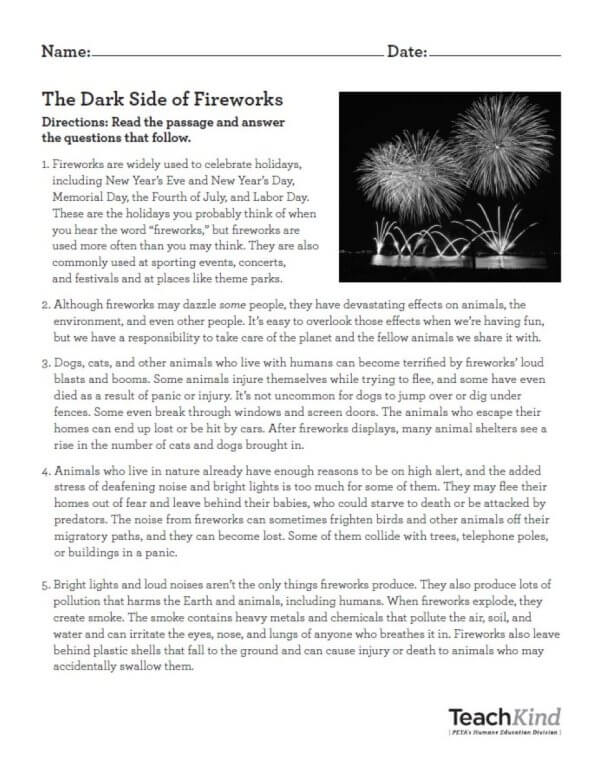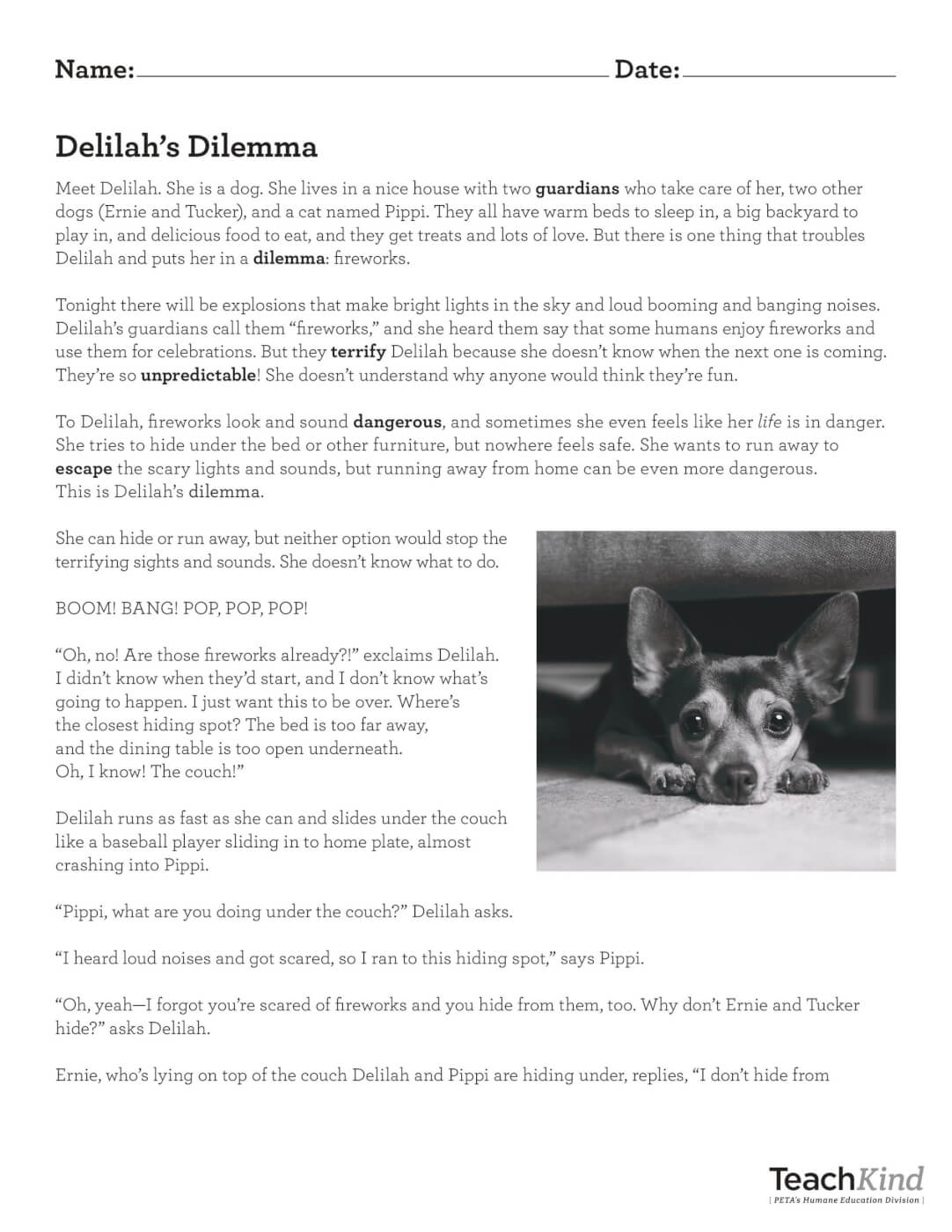Test Prep and Empathy-Building Reading Passage: Fireworks Are Devastating, Not Dazzling
This lesson plan is designed to help teachers present animal rights and environmental issues to their students. If you’re an educator, please feel free to adapt this material to fit your needs—and please contact us if you need help incorporating it into your curriculum.
When you hear the word “fireworks,” you probably think of holiday celebrations on New Year’s Eve, Memorial Day, and the Fourth of July. Or you might think of a concert, a sports match, or a theme park show that’s ended, quite literally, with a bang. But what you may not think about are the negative effects of fireworks and how they cause harm to those who don’t enjoy these sights and sounds. TeachKind has done what we like to call “feeding two birds with one scone” by creating a reading passage that can be used for test prep while simultaneously teaching students about the devastating effects of fireworks and how they can help protect animals and the environment from them.

Students will feel empowered to help their friends—be they furry, feathered, or human—and the environment after reading the passage and answering the questions. You can also open the floor to a class discussion and allow students to talk about their own experiences with fireworks, along with any problems and solutions they come up with. Discussing real-world issues helps motivate kids and gives them an authentic reason to engage in a collaborative discussion in which they review the key ideas contained in the text and draw conclusions.
This activity will help students identify the main idea, determine the author’s purpose, draw conclusions, make inferences, and understand that fireworks are devastating, not dazzling, and that all sentient beings—no matter their species—deserve to live in peace.
Suggested grade levels: 3–5
Objectives
Affective: Students will be able to demonstrate an understanding of the harmful effects of fireworks and why using them is cruel.
Cognitive: Students will determine the main idea of an informational passage and the author’s purpose for writing it. They’ll also draw conclusions and make inferences based on contextual evidence.

To deepen students’ understanding of empathy, consider bundling “Delilah’s Dilemma,” a fictional tale told from a dog’s perspective, with the informational reading passage “The Dark Side of Fireworks” and corresponding comprehension questions. This story helps young learners comprehend the stress and fear that fireworks cause animals, while offering key vocabulary and discussion questions for further learning.

Materials
- Fireworks reading passage and comprehension questions
- “Delilah’s Dilemma” fictional story
- Main idea graphic organizer
- Author’s purpose graphic organizer
- Inferencing graphic organizer
Audio and Video Resources
- Fireworks Are Terrorizing for Animals
- 5 Ways to Help Your Dog Survive Fireworks
- Bellamy Young: Keep Animals Calm and Safe While ‘Bombs Burst in Air’
- Edward James Olmos Says Fireworks Displays Are No ‘Blast’ for Animals
- Carla Morrison warns against fireworks
Common Core Learning Standards Addressed
CCSS.ELA-LITERACY.RI.3.1
Ask and answer questions to demonstrate understanding of a text, referring explicitly to the text as the basis for the answers.
CCSS.ELA-LITERACY.RI.3.2
Determine the main idea of a text; recount the key details and explain how they support the main idea.
CCSS.ELA-LITERACY.RI.4.1
Refer to details and examples in a text when explaining what the text says explicitly and when drawing inferences from the text.
CCSS.ELA-LITERACY.RI.4.2
Determine the main idea of a text and explain how it is supported by key details; summarize the text.
CCSS.ELA-LITERACY.RI.5.1
Quote accurately from a text when explaining what the text says explicitly and when drawing inferences from the text.
CCSS.ELA-LITERACY.RI.5.2
Determine two or more main ideas of a text and explain how they are supported by key details; summarize the text.
Need more inspiration? Sign up for TeachKind e-mails to stay up to date with new content and promotions.
By submitting this form, you’re acknowledging that you have read and agree to our privacy policy and agree to receive e-mails from us.





